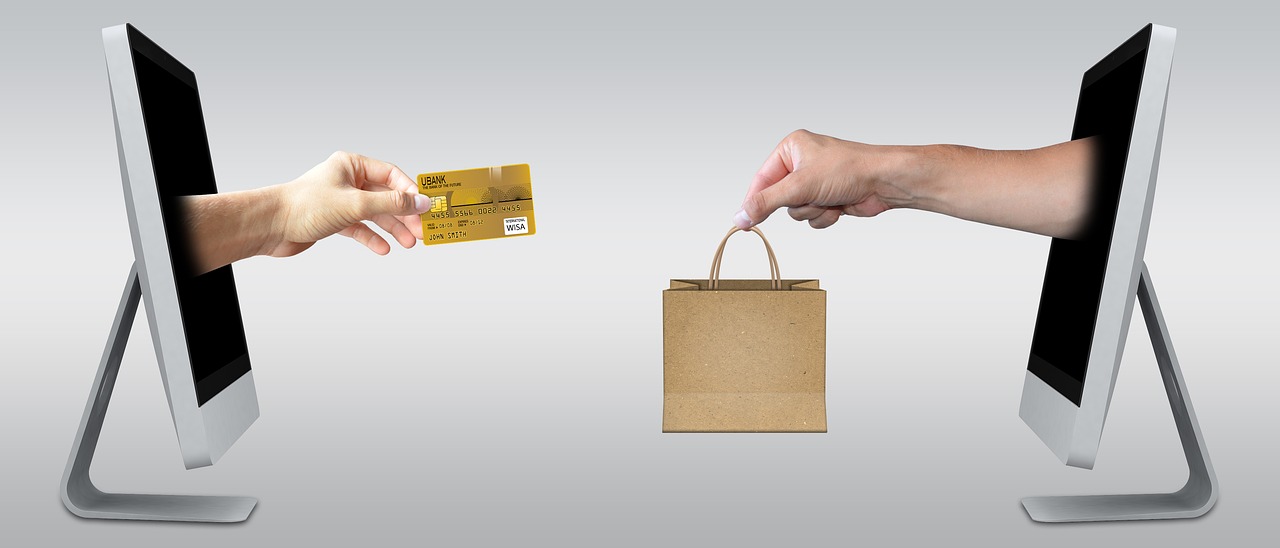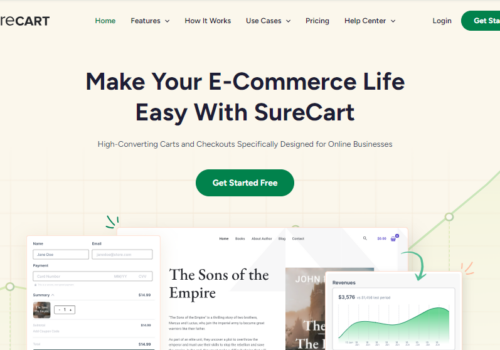E-commerce allows buyers and sellers to trade across vast distances and cultural divides, requiring only the presence of stable internet connectivity to be a viable pursuit, and it remains a massive growth industry some years after first reaching the mainstream. This is because technology keeps progressing, tech literacy is going up, and infrastructure is improving.
And today, more than ever before, there are plenty of opportunities out there for the aspiring e-commerce seller — even if they don’t have a lot of time to contribute to the effort. This means that working as an online merchant isn’t limited to those who can dedicate their lives to it. It can be a primary career, or a side venture, or a hobby pursued entertainment or education.
There are two options in particular that are popular among time-poor entrepreneurs who want to start selling without having to commit a lot of time to building operations, with each one using a third-party service to fulfill orders: the first is using print on demand services, and the second is using dropshipping from AliExpress.
But what do those options actually involve? What makes them valuable, and which one is ultimately likely to prove more profitable for you? Let’s compare and contrast these two time-saving e-commerce tools to see how they stack up:
Print On Demand Vs. AliExpress Dropshipping: Which One Is More Profitable??
What is print on demand?
Customizable products like items of clothing and pieces of merchandise are extremely popular online for buyers and sellers alike. For buyers, the appeal is simple: everyone needs new things to wear, style is culturally important, and there’s a lot of creative enjoyment in embracing new fabrics and designs. And the benefits for sellers are similarly obvious: such items are typically quite lightweight, easy to ship, and fairly cheap to manufacture.
A print on demand service works as the middle ground between a buyer and a seller. The seller offers a range of options to shoppers, all based on the capabilities of the print on demand service they’re using. When a shopper places an order, that order is passed to the print on demand service to be produced — after that, the product will either be sent to the seller so they can ship it to the buyer or (more commonly) sent directly to the buyer.
This arrangement works out well for everyone:
- The buyer notices no difference between buying from a manufacturer and buying through a seller using a print on demand service. It doesn’t affect how long they’ll need to wait, the quality of the end product, or (assuming the seller has negotiated a good rate) how much they have to pay.
- The seller gets to offer a large range of products and customization options and come across as capable without needing to manufacture anything (or even know the first thing about the production process). Their time, effort and investment can go exclusively towards marketing, customer service, and — most importantly — design.
- The print on demand service gets to focus on the production and fulfillment process and avoid having to deal with customers directly. It can simply sit back and let its clients pass orders along before taking away a decent cut of the revenue — and because it can play an anonymous role, it can potentially fulfill orders for competing companies.
What is AliExpress dropshipping?
The world of commerce is rife with generic supply, meaning products that are offered up to any retailers that want to sell them (and even rebrand or refine them should they wish). You’ll see this particularly common with Chinese consumer electronics — the exact same product will be branded in tens or even hundreds of ways across different stores.
When e-commerce came along, this process was made even easier through the advent of dropshipping. Drop shipping is similar to print on demand, except it doesn’t involve customization, meaning it can be used for any type of product that’s mass produced. A drop shipper offers up a massive range of items that sellers can offer through their stores, and any orders that result are dealt with by the drop shipper.
AliExpress is possibly the biggest dropshipping provider in the world. Based in China, it’s actually a marketplace somewhat similar to eBay or Etsy, only minus any focus on exclusivity. You can order a single item through the site if you’d like to, or you can list that product on your site (changing the listing details however you like) and have AliExpress fulfill it for you.
Consequently, the buying chain when using AliExpress dropshipping can be a little convoluted! The buyer places the order with the seller, which passes it to a drop shipping app of some kind, which passes it to AliExpress, which passes it to the actual manufacturer. It sounds awkward, but it’s all handled very smoothly. It might be an issue with a fast-paced service, but since AliExpress shipping is cheap and slow (even at its fastest), it allows plenty of time for logistics to be worked out.
How to use print on demand services
Using a print on demand service with an e-commerce business is usually fairly simple. You can make it more complicated by negotiating a specific deal with a printing facility, but there isn’t usually much reason to take that route — you’re unlikely to come away with a much better quote than you’d get from a dedicated print on demand service, and you’d be missing out on the convenience of being able to rapidly integrate with your store
How does that fast integration work? Well, the top print on demand services are aimed squarely at online sellers, so they’ve developed integrations and/or apps, plugins or extensions for the most popular e-commerce platforms. If you’re using one of those platforms for your e-commerce store, you’re likely only a simple app installation away from adding a full selection of print on demand products to your range.
What is the top print on demand contenders? There’s Printify, Printful, CustomCat, Merchify, and Scalable Press, to name just some. Each has its advantages and disadvantages. For instance, some print on demand services run in-house production, while others outsource it. They’ll also have different customization options, materials, and delivery rates.
If you want to start using print on demand, you can always test various services to see which one works best for you — particularly if your store CMS will work seamlessly with each one. It’s standard for such a service to offer a free low-end tier and profit solely through taking a cut of each order, so if you don’t sell any items, you won’t lose any money.
How to use AliExpress dropshipping
As with print on demand, there are various drop shipping providers out there that vary in quality and products offered, but AliExpress is among the easiest to implement because it’s such a popular website and so widely supported — so much so that not actually having a store isn’t that significant a roadblock.
What do I mean by this? Well, if you do have a store already, it should be simple to start expanding your listed stock with AliExpress products. You just need to install a suitable app, add-on, plugin or extension. For instance, you can expand a Shopify store with a free app from Appfreaker, and similar options are available for every other popular CMS.
However, you can also use a service like WooDropship to create a store dedicated to dropshipping. Starting $14.99 per month, you can cover all your hosting and support needs, quickly getting your site off the ground and taking orders. This is even faster than the second-fastest method of buying a live e-commerce store and installing an app.
Overall, it’s as simple as tracking down a dropshipping service that’s compatible with your preferred CMS and confirming that it sources its range from AliExpress. If you’re looking at a range of consumer electronics with options for ePacket shipping, that’s fairly likely.
When is print on demand worth doing?
So, when might you want to focus on using a print on demand service for your store? Let’s look at some circumstances in which it might be a profitable choice for your business:
- Your audience wants distinction. Some people don’t really care about how distinct the products they buy happen to be, but plenty is very invested in it. If you sold generic dropshipped shirts, anyone who bought one would know that thousands of others across the globe would be buying that same shirt — but if you sell unique items printed on demand, you can preserve a feeling of group exclusivity and distinction.
- You have a strong brand. Part of maintaining a strong brand is keeping your name and style out there, and by selling items using your logo and/or designs, you can turn your customers into willing brand representatives.
- You want to play off pop culture. You might not care much about the latest memes, but don’t underestimate how many shirts they sell. Using a print on demand service allows you to rapidly implement new creative designs to reference elements of pop culture that are likely to drive sales.
- You want to run limited editions. A plain white T-shirt is as generic as you can get, but that same shirt with your custom-made design is instantly unique. This means that you can introduce artificial scarcity to your range. For instance, you could run a limited-time design and commit to only selling 500, deleting the listing after that.
There are plenty more circumstances in which you might want to use print on demand, but these are the most notable. It’s easy enough to introduce decent profit margins if you have high-quality designs, and you’ll be able to stand out from other sellers through style alone.
When is AliExpress dropshipping a good idea?
What about the drop shipping option? It’s also a great choice, so let’s check out some situations in which you’d benefit significantly more from stocking some AliExpress items:
- You’re creative with words, not graphics. More than anything else, visuals sell printed items. The right design can turn a basic sweater into a collector’s item, but if you don’t have any flair for visuals (and you don’t want to invest heavily in design) then you might struggle to succeed that way. If you’re good with words, though, then standard drop shipping can be excellent — when everyone has the same products, you need an edge, and having a great copy will give you a huge edge over your rivals.
- You want to offer a wide range of items. Print on demand, as the name suggests, is limited to items that can be printed (or at least printed upon). If you aspire to be a general trader and sell everything from laptops to footballs, dropshipping will be the fastest way to get there.
- You have a keen eye for trends. Items of clothing have fairly static popularity, shifting only with the seasons (and, to some extent, fashion) — whereas AliExpress offers countless items that can go from cheap to costly in a heartbeat. Think back to the fidget spinner craze. Fidget spinners were extremely cheap but got significantly pricier when the demand rocketed, and any drop shipping store with a little foresight had the chance to list more fidget spinners with healthy margins and reap the profits while other retailers were still figuring out whether to produce some.
The big advantage of AliExpress dropshipping is the sheer variety on offer. Whatever direction you want to pursue as an entrepreneur, you can find suitable items in the AliExpress range — and whenever you want to change things up, you can do so easily.
Which is likely to make you more money?
We’ve now covered the basics of this topic, including what these two options are, how they can practically be implemented, and when they’re worth pursuing — so it’s time to return to the titular question and try to determine which one is more profitable. So, which one should you pick if you only choose one?
Overall, at this point, I have to suggest going with print on demand over general dropshipping. I think you’re more likely to profit from it, for the following three reasons in particular:
Drop shipping is increasingly saturated. Because it’s so easy to lump hundreds of drop shipping products into an existing store, you’ll see the same items appear again and again across countless sites. This damages their perceived value. After all, when you can get something from anywhere for roughly the same price, where’s the urgency to buy from any specific store? And doesn’t that suggest that it’s worth waiting for a price drop? Custom clothing, though, never seems to reach a saturation point, largely because even the smallest design change creates an entirely new product from an aesthetic standpoint.
Generic products have tough profit margins. Once you factor in the cut of the drop shipper, it’s tough to competitively price a dropshipped item (particularly for higher-priced products). Even if your price is only fractionally higher than a shopper can find elsewhere, it’ll still lose your sales — and if you put your prices low enough to beat the competition, you’ll struggle to make any money from your sales. The appeal of the clothing (and branded merchandise) industry is that having a popular brand is often enough to justify charging hugely more for essentially the same item with only cosmetic changes.
You have shipping options with print on demand. And by options, I refer mainly to shipping speed. If you’re dropshipping electronics from China, shipping will take as long as it takes, and you won’t have any way to speed it up if you want your service to stand out. Print on demand services, though, should be local (at least to your country), giving you the option of providing two-day delivery or specific delivery slots.
Either of these approaches can make you money, of course, and there’s nothing solid in place to prevent you from scaling up rapidly. It simply seems to be the case that you’re more likely to run up against challenging circumstances and diminishing returns if you try to compete as an AliExpress drop shipper.
Quick Links:
-
Oberlo Review: Shopify’s Best AliExpress Dropshipping App? READ HERE
-
[Latest January 2025] List Of Top 10 Best Shopify Alternatives Must Try
-
How To Find Best Dropshipping Shopify Products Ideas With This New Tool
-
Legit Tools To Find Winning Profitable Shopify Products January 2025
-
Sellics Review With Discount Coupon 2025: Save Upto $240/year
Conclusion:-Print On Demand Vs. AliExpress Dropshipping January 2025
if you’re only going to use one of these e-commerce options, try using a print on demand service. You can use higher profit margins, get more creative with the products, and enter a less saturated market. But who says you need to use just one? There’s no reason why you can’t flesh out your store with print on demand items and general dropshipping stock — and you might find that a balance is the best solution.








Pretty informative article. After analyzing I personally feel that Dropshipping is a better idea for an extra income. But still I have a question about Aliexpress invoice as Aliexpress do not provide them do you guys have some substitute for that?